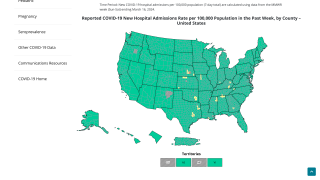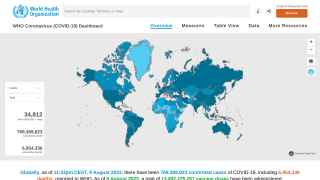Cross-Reactive T Cells Associated with SARS-CoV-2 Protection

A new study, published in Nature Communications on January 10, 2022, and led by Imperial College London researchers, provides evidence of a protective role for T cells.
This study suggests that the initial frequency of IL-2-secreting cross-reactive T cells is associated with protection from infection in COVID-19 contacts.
While previous studies have shown that T cells induced by other coronaviruses can recognize the SARS-CoV-2 betacoronavirus, the new study examines for the first time how the presence of these T cells at the time of exposure influences whether someone becomes infected.
‘Ours is the first study to detect ex vivo IL-2 responses that likely correlate with central memory T cell responses, specific for cross-reactive epitopes in contacts of confirmed COVID-19 cases, early after exposure.’
The researchers also say their findings provide a blueprint for second-generation, universal vaccines that could prevent infection from future SARS-CoV-2 variants.
Dr. Rhia Kundu, from Imperial’s National Heart & Lung Institute, stated in a press release, “Being exposed to the SARS-CoV-2 virus doesn’t always result in infection, and we’ve been keen to understand why.”
“We found that high levels of pre-existing T cells, created by the body when infected with other human coronaviruses like the common cold, can protect against COVID-19 infection.”
"While this is an important discovery, it is only one form of protection, and I would stress that no one should rely on this alone.”
The study began in September 2020 when most people in the UK had neither been infected or vaccinated against SARS-CoV-2. It included 52 people who lived with someone with PCR-confirmed SARS-CoV-2 infection and who had therefore been exposed to the virus.
Blood samples from the participants were taken within 1-6 days of being exposed to the virus. This enabled the researchers to analyze the levels of pre-existing T cells induced by previous common cold coronavirus infections that also cross-recognize proteins of the SARS-CoV-2 virus.
The researchers found significantly higher levels of these cross-reactive T cells in the 26 people who did not become infected, compared to the 26 people who did become infected.
These T cells targeted internal proteins within the SARS-CoV-2 virus, rather than the spike protein on the virus’s surface, to protect against infection.
These researchers say ‘current vaccines do not induce an immune response to these internal proteins.’
The researchers say that ‘alongside existing effective spike protein-targeting vaccines, these internal proteins offer a new vaccine target that could provide long-lasting protection because T cell responses persist longer than antibody responses which wane within a few months of vaccination.’
Professor Ajit Lalvani, senior author of the study and Director of the NIHR Respiratory Infections Health Protection Research Unit at Imperial, says: “Our study provides the clearest evidence to date that T cells induced by common cold coronaviruses play a protective role against SARS-CoV-2 infection.”
“These T cells protect by attacking proteins within the virus, rather than the spike protein on its surface.”
"The spike protein is under intense immune pressure from a vaccine-induced antibody which drives the evolution of vaccine escape mutants.”
“In contrast, the internal proteins targeted by the protective T cells we identified mutate much less.”
“Consequently, they are highly conserved between the various SARS-CoV-2 variants, including Omicron.”
“New vaccines that include these conserved, internal proteins would therefore induce broadly protective T cell responses that should protect against current and future SARS-CoV-2 variants.”
‘It is perhaps unsurprising that the signal we detected was modest because we measured ex vivo responses of physiological relevance based on detection of IL-2 secretion by T cells within 20-hours of antigen contact without co-stimulation.’
Our background IL-2 response to dimethyl sulfoxide negative control was low (median = 4.5 and IQR 2–7.8), and the use of a stringently selected set of high-purity cross-reactive peptides in the absence of exogenous co-stimulation or antigen-driven expansion during extended culture mean the cross-reactive T cells we detected are unlikely to be non-specific artifacts.’
‘Furthermore, these cross-reactive IL-2-secreting T cells can be stimulated with cognate antigen in vitro to proliferate and expand into IFN-γ -secreting T cells and therefore likely represent memory T cell responses.’
‘In contrast, IFN-γ -secreting T cells specific for cross-reactive epitopes could not be grown from individuals who lacked IL-2-secreting T cells.’
The researchers note some limitations to their study, including that, because it is small and 88% of participants were of white European ethnicity, it is not possible for them to model demographic factors. Contact Emily Head at Imperial College London with questions: email to:[email protected].
The study was funded by the NIHR Health Protection Research Unit in Respiratory Infections and the Medical Research Council. No industry conflicts of interest were disclosed.
PrecisionVaccinations publishes fact-checked research-based vaccine news.
Our Trust Standards: Medical Advisory Committee
























